Nikola Tesla - My Inventions (Pt 1) My Early Life
LibriVox recording of My Inventions and Other Works by Nikola Tesla.
Read in English by LibriVox volunteers.
Between February and October 1919, Nikola Tesla submitted many articles to the magazine Electrical Experimenter. The most famous of these works is a six-part series titled My Inventions, which is an autobiographical account of Nikola Tesla's life and his most celebrated discoveries. This work has been compiled and republished as a stand-alone book several times under different names but has been a cause of some controversy due to some versions deviating from the original text without explanation. This LibriVox project returns to the original text and expands upon it through the addition of Nikola Tesla's own supplementary articles as they were published in 1919. (Summary by Kane Mercer)
Nikola Tesla (/ˈtɛslə/; Serbian Cyrillic: Никола Тесла, 10 July [O.S. 28 June] 1856 – 7 January 1943) was a Serbian-American inventor, electrical engineer, mechanical engineer, and futurist best known for his contributions to the design of the modern alternating current (AC) electricity supply system.
Born and raised in the Austrian Empire, Tesla studied engineering and physics in the 1870s without receiving a degree, gaining practical experience in the early 1880s working in telephony and at Continental Edison in the new electric power industry. In 1884 he emigrated to the United States, where he became a naturalized citizen. He worked for a short time at the Edison Machine Works in New York City before he struck out on his own. With the help of partners to finance and market his ideas, Tesla set up laboratories and companies in New York to develop a range of electrical and mechanical devices. His AC induction motor and related polyphase AC patents, licensed by Westinghouse Electric in 1888, earned him a considerable amount of money and became the cornerstone of the polyphase system which that company eventually marketed.
Attempting to develop inventions he could patent and market, Tesla conducted a range of experiments with mechanical oscillators/generators, electrical discharge tubes, and early X-ray imaging. He also built a wirelessly controlled boat, one of the first ever exhibited. Tesla became well known as an inventor and demonstrated his achievements to celebrities and wealthy patrons at his lab and was noted for his showmanship at public lectures. Throughout the 1890s, Tesla pursued his ideas for wireless lighting and worldwide wireless electric power distribution in his high-voltage, high-frequency power experiments in New York and Colorado Springs. In 1893, he made pronouncements on the possibility of wireless communication with his devices. Tesla tried to put these ideas to practical use in his unfinished Wardenclyffe Tower project, an intercontinental wireless communication and power transmitter, but ran out of funding before he could complete it.
After Wardenclyffe, Tesla experimented with a series of inventions in the 1910s and 1920s with varying degrees of success. Having spent most of his money, Tesla lived in a series of New York hotels, leaving behind unpaid bills. He died in New York City in January 1943. Tesla's work fell into relative obscurity following his death, until 1960, when the General Conference on Weights and Measures named the International System of Units (SI) measurement of magnetic flux density the tesla in his honor. There has been a resurgence in popular interest in Tesla since the 1990s.
-
 1:09:36
1:09:36
Tucker Carlson
4 hours agoAdvice to Men: Reject Sex, Parties, and Fame. Embrace God Instead.
86.4K83 -
 2:39:51
2:39:51
ZeroHedge
4 hours agoThe Great Crypto Vs Gold Debate
23.3K13 -
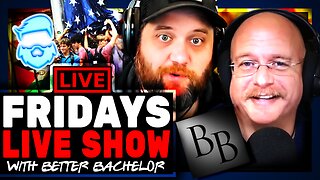 2:14:33
2:14:33
The Quartering
11 hours agoThe Heartbreaking State Of Men! w/ Better Bachelor
53K48 -
 1:07:48
1:07:48
Edge of Wonder
6 hours agoCIA Docs About Vampires, Alien Encounters, Antarctica & More Weird News
28.2K10 -
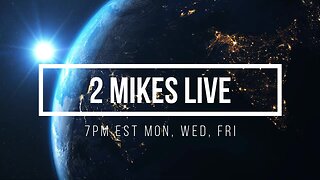 1:37:39
1:37:39
2 MIKES LIVE
7 hours ago#61 2ML Open Mike Friday with special guest Glenn Curry!
24.5K1 -
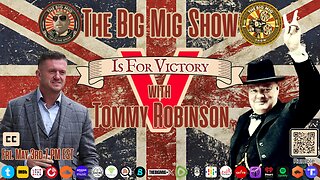 1:24:28
1:24:28
The Big Mig™
1 day agoV is for Victory with Tommy Robinson
22.2K18 -
 57:32
57:32
The Amber May Show
8 hours agoGain of Function | Avian Flu | Polio & Vaccines | Natural Remedies Essential Oils | Dr. Hadar
23K6 -
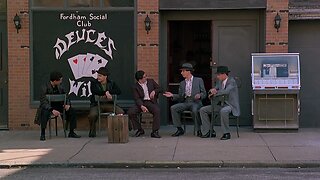 2:07:09
2:07:09
Quite Frankly
10 hours ago"Odd News, Social Clubs, Strange Hobbies" ft Matt & Vinny Brusco 5/3/24
28.9K6 -
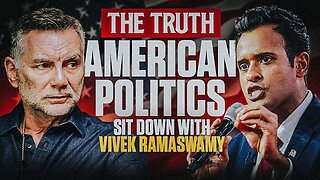 35:03
35:03
Michael Franzese
8 hours agoHow Political Bias Is Destroying Our Democracy | Sit-Down with Vivek Ramaswamy
43.7K62 -
 2:01:32
2:01:32
Twins Pod
9 hours agoTwins Pod - Episode 11 - Fresh & Fit: Girls, Women & B**ches
72.2K41